
When examining the changing role of rural fire departments and the growing developments in the wildland urban interface (WUI), a need was identified for training structural firefighters in wildland firefighting. To address this need, the United States Fire Administration developed a program with the National Wildfire Coordinating Group (NWCG) called Wildland Training for Structural Firefighters Skills Crosswalk (Crosswalk). Changes in this program have reduced the number of courses from four to three. The current courses available through the NWCG for structural firefighters are G-131 Firefighter 1; G-231 Engine Boss, Single Resource; and G-330 Strike Team Leader. It should be noted that the NWCG firefighter designations are opposite of the designations used by the National Fire Protection Association (NFPA).
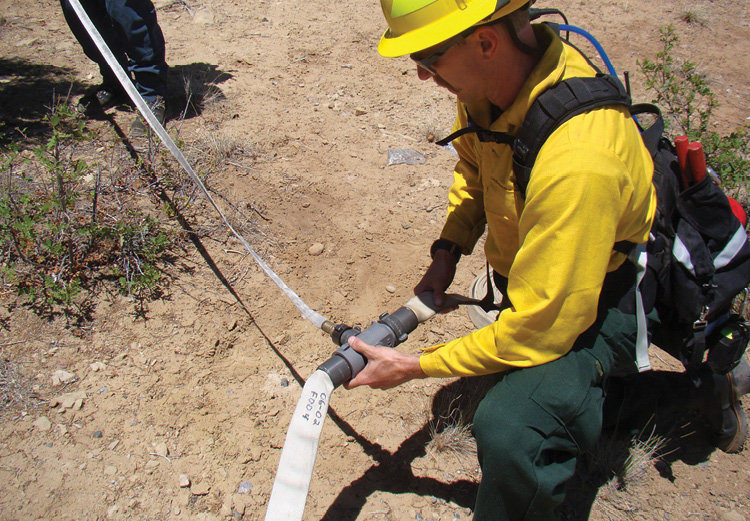
(1) Firefighters prepare a progressive hoselay for a wildland fire. Structural firefighters must understand the similarities and differences in wildland fire tactics. (Photos by author.)
Structural firefighters and fire officers participating in the Crosswalk training must meet the qualifications for firefighters as specified by NFPA 1001, Standard for Fire Fighter Professional Qualifications, for G-131, and qualifications for fire officers as specified by NFPA 1021, Standard for Fire Officer Professional Qualifications, for G-231 and G-330. Although the program recognizes the experience and qualifications of structural firefighters, it also identifies the training local fire departments need to make a safe and effective initial attack on a wildland fire. Crosswalk provides a standardized template for developing local training programs to meet those requirements.
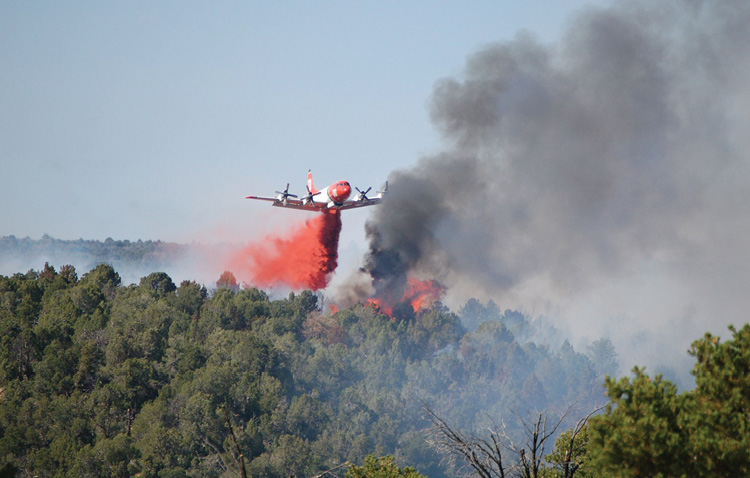
(2) Response time, weather conditions, topography, and fuel type can impact your ability to mount a ground attack on the fire. For this incident, an air attack was initiated before committing ground resources.
Rural fire departments operating in the WUI need to review the Crosswalk program to ensure that their training meets all of the course work identified. One of the items structural firefighters need to be aware of is the number of tactics used in fighting a wildland fire. Although structural and wildland fire suppression strategies may contain some similarities, the tactics are quite different. This article provides a basic overview of these wildland fire tactics for the structural firefighter.
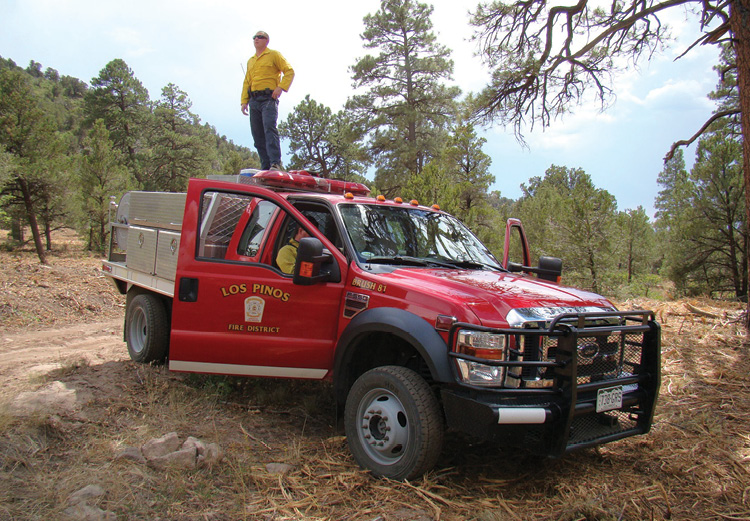
(3) Firefighter safety requires the use of lookouts, communications, escape routes, and safety zones. Lookouts should be seasoned firefighters so they can recognize and communicate deteriorating conditions.
Wildland Firefighting Tactics
Much like the tactics employed in structural firefighting, wildland firefighting tactics encompass the operational aspects of suppressing the fire. They include determining where and how to create a control line and other measures used to contain and control the fire. The tactics used in fighting a wildland fire must be consistent with the incident commander’s (IC’s) strategic plan.
Fire growth and behavior are based on several factors including response time, weather conditions, topography, and fuel types. If your initial size-up indicates that you can safely attack the fire, you can use three basic fire attack methods either by themselves or in combination. The objective is to control the head, flanks, and heel of the fire.
Firefighter Safety
You MUST use basic wildland firefighter safety concepts at every incident! Your “safety toolbox” should contain information on the United States Department of Agriculture Forest Service Task Force’s 10 Standard Fire Orders; 18 Watch-Out Situations; and 9 WUI Watch Out Situations as well as lookouts, communication, escape routes, and safety zones (LCES). If good LCES is maintained, the 10 Standard Orders and 18 Watch-Outs should not be compromised. Applying these safety concepts to all aspects of wildland fire suppression is critical, and all tactics must adhere to them.
Risk Management Process
Before engaging in any wildland fire suppression activity, consider the risk management process. This tool will assist the IC and firefighters in determining the risk/benefit ratio. You can assess the risk management process using the following steps:

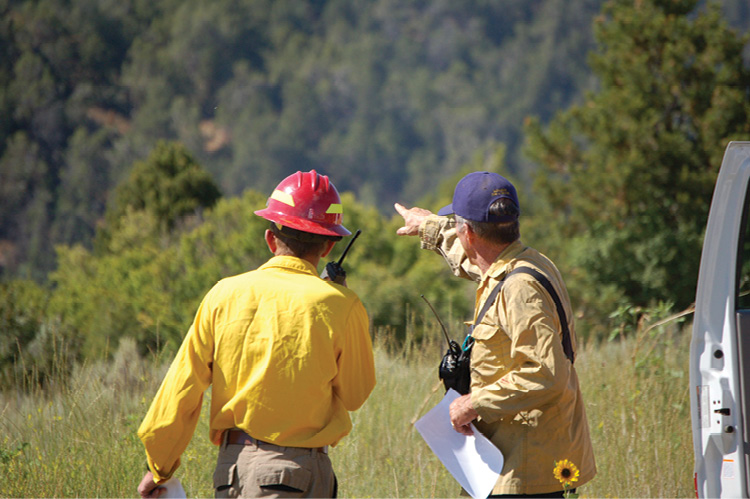
(4) The hazard assessment of fuel, temperature, and terrain is part of the risk management process. (5) Consider the risk/frequency matrix before assigning personnel to high-risk operations.
Situational awareness. The IC gathers information from firefighters on the ground, dispatch, local knowledge, and other resources available in his local area. He also gathers information based on incident objectives; weather forecasts; communication; and, most importantly, who’s in charge.
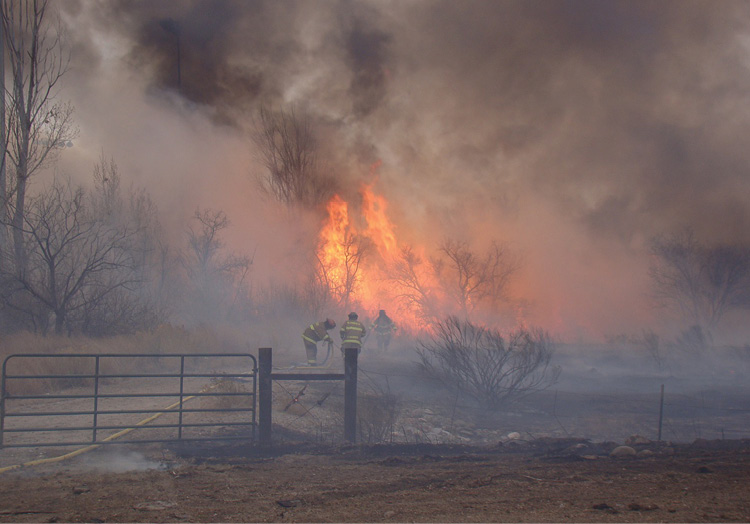
(6) Firefighters prepare to make a direct attack on this wildland fire.
Hazard assessment. Assess all potential fire behavior hazards such as fuel characteristics, fuel moisture, temperature, and terrain.
Hazard control. Have you established LCES? It is mandatory at all fires.
Decision point. Are controls in place for identified hazards? Are selected tactics based on expected fire behavior? Have instructions been given and understood? If the answer is no to any of these questions, stop and reassess the situation.
Evaluate. This step incorporates the “human” factors. It considers the experience of firefighters, fatigue or stress, and attitude.
Once you have completed the risk management process, make a go/no-go decision for fire suppression. You can also integrate the classic “risk/frequency” matrix into the risk management process. Depending on your on-scene personnel’s experience, avoid performing high-risk operations that are used infrequently. Also consider other factors in the decisions you make to fight the fire such as fire behavior, exposures, and the environmental value of the area (such as watershed or timber region).
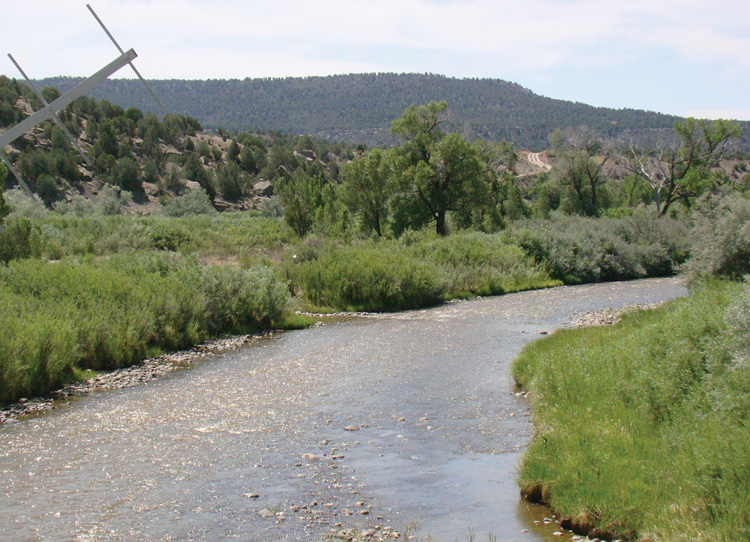
(7) An indirect attack can make use of natural barriers such as a river or stream.
Direct Attack
Also known as “working with one foot in the black,” this tactic employs personnel and equipment starting from a common anchor point, working close to the fire’s edge, and cutting line or deploying hoses to create a control line around the fire. Although there are many advantages to direct attack, the biggest advantage is that firefighters can usually escape into the burned area or “black” if fire behavior dictates it. Following are three subgroups to this method of attack:
Flank attack. Firefighters work the hot flank of the fire, attempting to envelop the head of the fire and continue around the black area of the cold flank, constructing a control line back to the anchor point.
Pincer action. This action requires that your resources be split from a common anchor point, working both flanks of the fire simultaneously, attempting to reduce the head of the fire.
Envelopment. In this action, personnel operate from multiple anchor points and work the head of the fire and the cold flank.
Indirect Attack
In some situations, the fire behavior, fuel types, and lack of on-scene resources preclude any aggressive direct attack. You can use natural barriers while gathering additional resources and continuing planning as the incident develops. These natural barriers can include fuel breaks such as streams, lakes, ponds, rock slides, and any other areas that contain sparse fuels. They can also be made of constructed barriers such as roads or irrigation canals.
Parallel Attack
This attack method is used mainly by hand crews and bulldozers when a direct attack is not practical. Crews and bulldozers work anywhere from five to 50 feet off the hot flank, allowing fuel to burn out up to the control line. Be aware of the risk of having unburned fuel between you and the fire and the danger it presents to personnel working on the control line. Use this method only when the winds are in your favor.
Backfiring
Both the indirect and parallel attack may employ backfiring or burning out. However, if you have not been trained to use these tactics, it falls into the “high-risk/low-frequency” type of operation. The risks when backfiring/burning out include wind changes, improper timing, sequence and speed of firing, placing personnel at risk, and creating additional exposures. Because of the complexity of these tactics, only experienced firefighters trained in using firing devices and conditions favorable for these operations should employ these tactics.

(8) Unless you are trained in this tactic, consider backfiring a high-risk/low-frequency operation.
Rural and volunteer firefighters are increasingly called on to respond to fires in the WUI. Take the initiative to develop and incorporate the Crosswalk training into your programs; it provides a performance-based methodology and a learning resource guide for qualified structural firefighters to increase their wildland firefighting knowledge and skills. Develop scenarios that you can use for tabletop or sandbox exercises, incorporating wildland firefighting tactics. Structural firefighters trained in wildland firefighting will work more safely and productively on their next WUI incident.
THOMAS W. AURNHAMMER is a 42-year fire service veteran, a fifth-generation firefighter, and chief of the Los Pinos Fire District in Ignacio, Colorado. He is also a graduate of the National Fire Academy’s Executive Fire Officer Program and has a bachelor’s of science degree in fire administration. Aurnhammer is designated as a Chief Fire Officer and is a member of the Institution of Fire Engineers, U.S. Branch.

